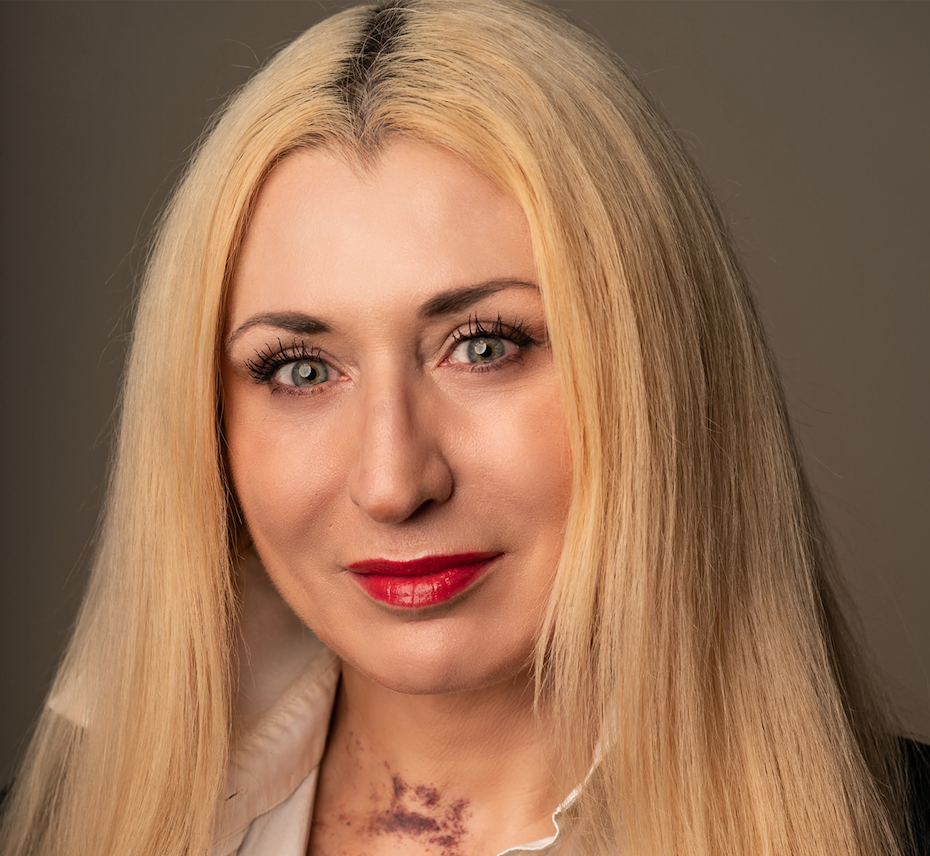

In 2022, amid Russia’s full-scale invasion, more than 23,000 Hasidic Jews marked Rosh Hashanah in Uman, Ukraine—which is, coincidentally, the city of the author’s ancestors. The pilgrims arrived from Israel, the United States, the United Kingdom, France and all over the world.
In the 18th century, during the Polish-Lithuanian Commonwealth, Uman became a notable center of Jewish life. It was home to a thriving Jewish community known for its religious scholarship and vibrant cultural contributions.
One of the most significant figures associated with Uman is Rabbi Nachman of Breslov, the founder of the Breslov Hasidic movement. He was first buried in Uman’s local Jewish cemetery in 1810, and later his grave was moved to what now is known as the Hasidic quarter.
Rabbi Nachman’s tradition draws tens of thousands to Uman yearly. Pilgrims gather to worship at the grave of Rabbi Nachman, dance and celebrate the Jewish New Year, Rosh Hashanah.
The Jewish community of Uman has a long and challenging history. Like many parts of Eastern Europe, the city witnessed its share of deadly anti-Jewish pogroms, particularly during the late 19th and early 20th centuries. Pogroms were fueled by various factors, including economic tensions, political upheaval and deeply ingrained anti-Semitic sentiments.
During the Holocaust, the Jewish community in Uman suffered greatly under the Nazi occupation. The Nazis implemented a systematic campaign of mass killings, deportations and persecution of Jews. The author’s great-grandparents were the victims of the Holocaust in Uman. The atrocities committed by the Nazis led to the near annihilation of Uman’s Jewish population.
During the Soviet era, anti-Semitism affected Jewish communities across the USSR, including Uman. Discrimination, restrictions on religious practices and limited opportunities were everyday experiences for Soviet Jews.
In response to these challenges, a significant number of Jews from Uman and other Soviet cities chose to emigrate to Israel during waves of Jewish emigration in the late 1980s and early 1990s. Later, the Braclav Hasids, followers of Rabbi Nachman, started to move to Uman and settle along Pushkin Street. Other Hasids only arrive around the New Year for festivities.
In 2022, during the war, local authorities, police and the Ukrainian military ensured a smooth celebration, wary of Kremlin provocations in support of Russian President Putin’s “denazification” narrative. “Denazification” of Ukraine is a term used by the Kremlin to justify its full-scale invasion of Ukraine and propaganda aimed at discrediting the Ukrainian government.
Putin has falsely accused Ukrainian authorities of being controlled by “neo-Nazis” or far-right elements, using this as a pretext for Russian military interventions in Ukraine, particularly in the eastern regions of Donetsk and Luhansk. The Ukrainian government is not under the control of neo-Nazis, and Ukrainian President Volodymyr Zelenskyy is of Jewish descent.
Russian propagandists’ claims are part of a disinformation campaign designed to undermine Ukraine’s sovereignty and justify the Russian war of aggression in the eyes of the international community.
On Sept. 27, 2022, Ukrainian media outlet Babel, citing intelligence sources, reported that Russian troops launched Iranian Shahed-136 kamikaze drones toward Uman, targeting the Hasidic Jews who gathered to celebrate. These acts were allegedly a part of Iran’s conditions for supplying drones to Russia.
The Ukrainian air defense successfully downed the drones, and the streets were filled with Hasidic Jewish men and boys, dancing and singing, despite curfews and alcohol bans. Women are not present at the celebration.
A Ukrainian woman who had fled bombardments of Kharkiv to stay in Uman spoke warmly of the festivities, “The more people pray for peace, the better.”
This year, despite warnings from the U.S., Israeli and Ukrainian governments about the ongoing war’s dangers, tens of thousands of Jewish men and boys again flocked to Uman for the Rosh Hashanah pilgrimage. On Sept. 7, Zelenskyy wrote that he spoke with Israeli Prime Minister Benjamin Netanyahu on ways to secure the safety of Hasidic Jews on their yearly pilgrimage to Uman.
“Ukraine has always warmly welcomed pilgrims and taken responsibility for their safety. Given the threat of Russian missiles and Iranian drones, this year’s pilgrimage comes with high-security risks. Our bomb shelters have a capacity for around 11,000 people. Swift joint action is required to ensure the safety of more people,” noted Zelenskyy.
Israel and Ukraine boosted security at border crossings near Uman, after weeks of tensions. While municipal roads in and around the city were closed for safety, drawing mixed reactions from year-round residents, Israel’s government allocated a $1 million aid package for the pilgrimage. United Hatzalah, the Israeli emergency response service, also increased its presence in the city.
At 5 a.m. on the morning of Sept. 15, 2023, the Russian Federation attacked Ukraine with Iranian-made Shahed drones, initially heading toward Uman but changing course at the last moment, diverting westward.
The official page of Ukraine’s Center for Countering Disinformation issued a warning, cautioning against disinformation spread by Kremlin-connected sources. According to these fake statements, the Ukrainian government planned a terrorist attack in Uman on Rosh Hashanah and intended to accuse Russia of “crimes against humanity.”
The Center for Countering Disinformation urged the global community and Ukrainians to rely solely on verified information sources, emphasizing that the Kremlin’s dissemination of such fakes aims to establish an information alibi for potential terrorist attacks within Ukraine’s borders.
“Glory to the Ukrainian heroes who have made a religious pilgrimage in the middle of the war possible,” wrote Vladislav Davidson, a USSR-born American journalist of Jewish origin who has spent a lot of time working in Ukraine. “The Telegram channels have filled up with warnings about possible attacks on Uman tomorrow. We are not afraid of Russian barbarism, and we are all going anyway.”

